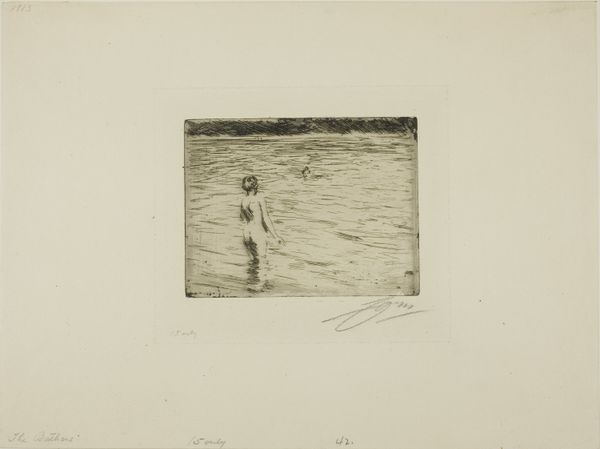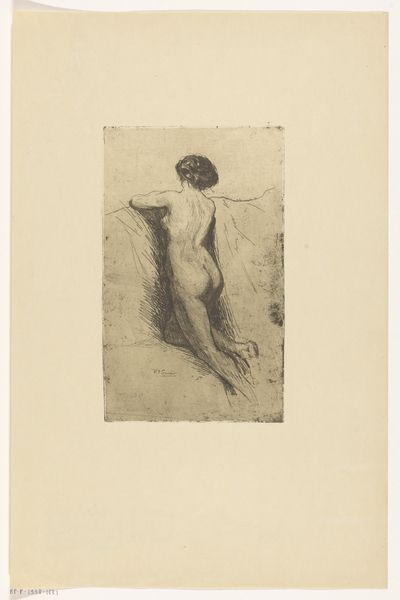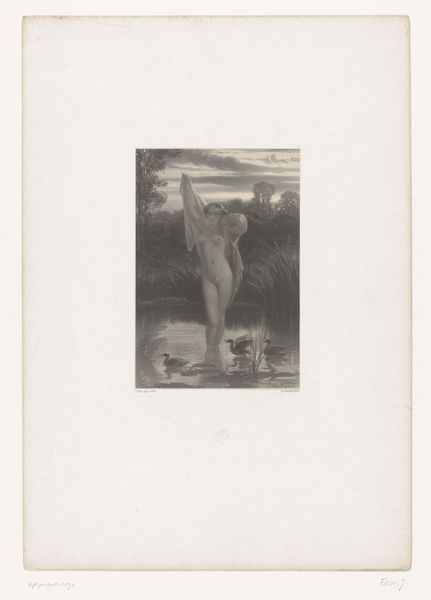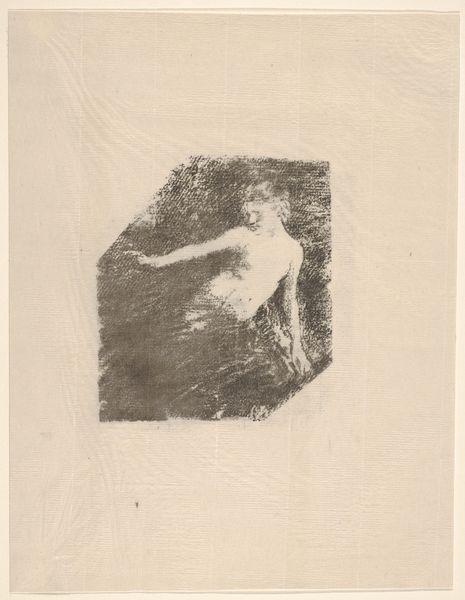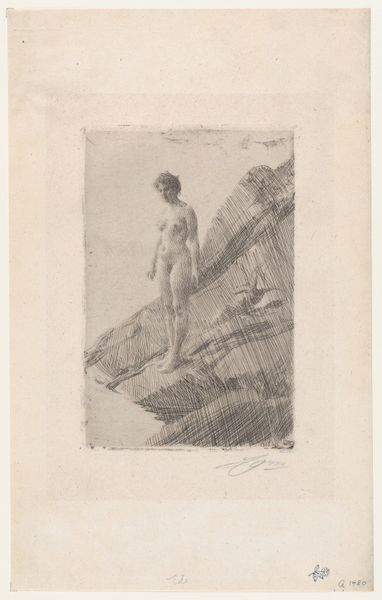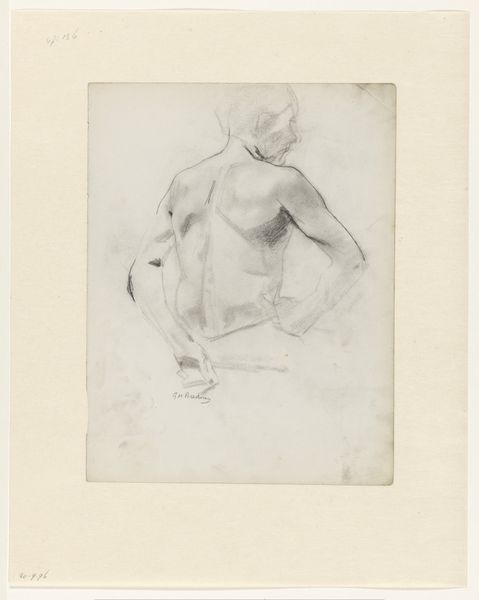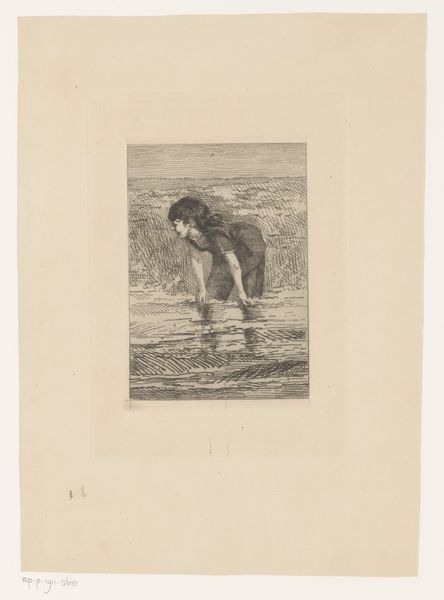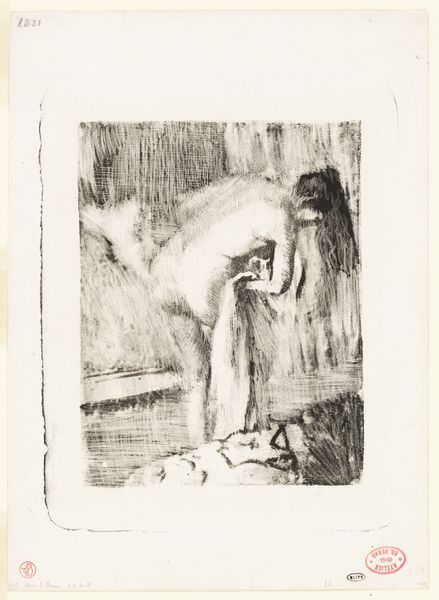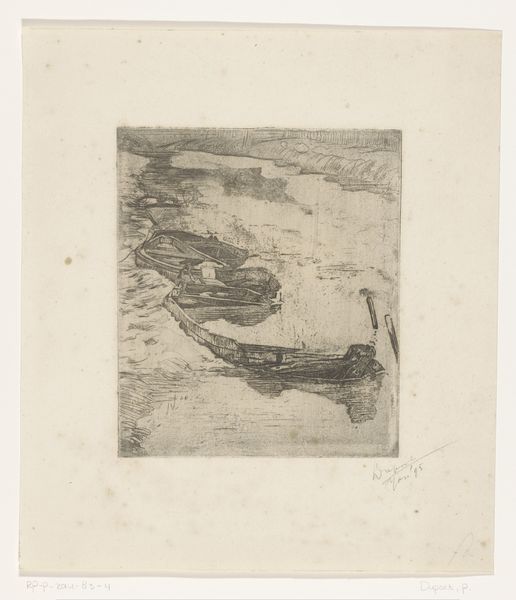
Dimensions: 152 × 132 mm (image/plate); 280 × 225 mm (sheet)
Copyright: Public Domain
Curator: Allow me to introduce "Cercles d'eau I," an etching by Anders Zorn created in 1907, currently residing here at the Art Institute of Chicago. Editor: It’s ethereal, isn’t it? The woman appears almost like a mirage, emerging from the water itself. The lines are so delicate, it feels incredibly intimate. Curator: Precisely. Zorn's mastery of the etching technique is evident in the delicate yet purposeful lines. Note how he employs a limited palette to create a sense of depth and movement solely through the contrast between the figure and the water. Consider the way the concentric circles of water visually structure the entire composition. Editor: Water is such a potent symbol, though. Beyond the formal considerations, think of its historical and mythological weight. Baptism, cleansing, rebirth…this woman isn’t just bathing; she is, in a way, being reborn within those "cercles d'eau"—circles of water. Curator: I agree that water bears significant symbolic weight across various cultures. However, I think Zorn is primarily concerned with capturing a fleeting moment of natural beauty through carefully constructed marks and visual planes. Look at how her pose, slightly off-balance, communicates a dynamic action; the structural components within that action serve as his focus, above any deeper symbolic intent. Editor: But even a fleeting moment can be imbued with meaning, right? The Impressionists, with whom Zorn was affiliated, often explored the ephemeral nature of existence, which carries implicit commentary on human condition. I see that here; a fragile figure existing for only a second, within an environment full of ever-changing ripples. Curator: An intriguing point. Perhaps there's more at play than meets the eye in the immediacy of its structural components. Editor: Precisely! So while the artist clearly explores this very deliberate use of compositional techniques, they never operate in a vacuum, without a culturally informed foundation for its impact. Curator: Well, I appreciate the additional context to my analysis of its pure structure; it appears we both found interesting attributes. Editor: Yes, it really does highlight how different interpretive lenses can deepen one's encounter with a work.
Comments
No comments
Be the first to comment and join the conversation on the ultimate creative platform.
